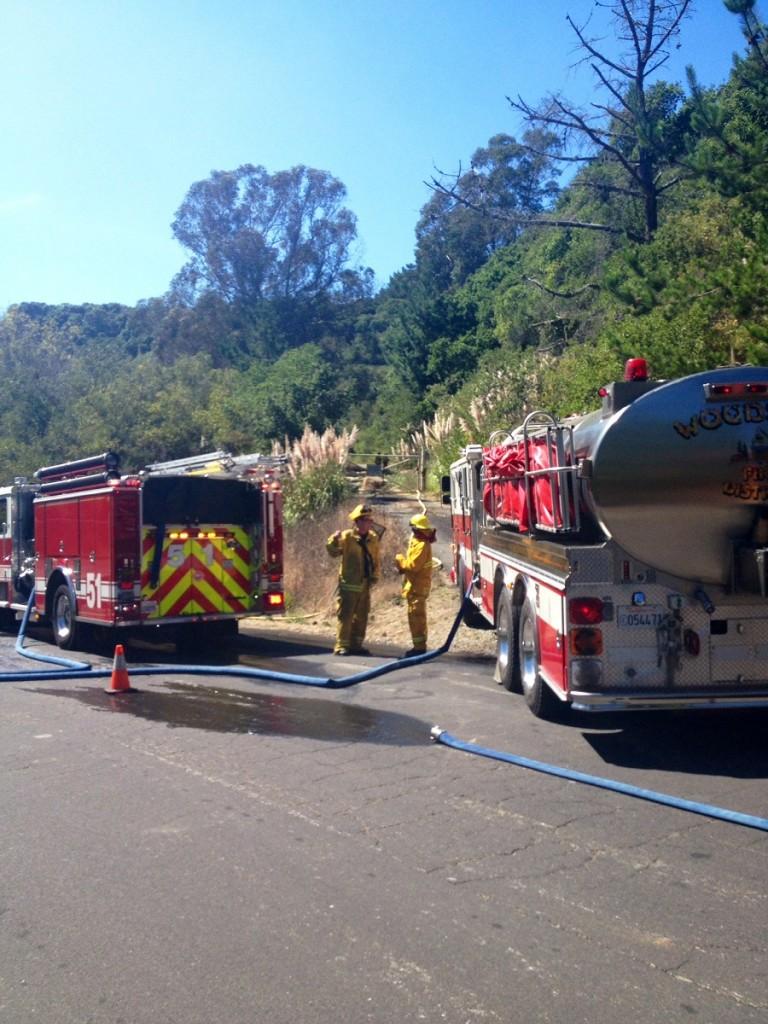Two fires spark discussion about future preparation
Two fires ignited on San Bruno Mountain on Sept. 7, both were reported as 2-alarm incidents and were burning close to each other.
“The first fire was down Hillside Blvd., believed to be caused by a PG&E transformer pole, perhaps a cigarette bud caught in the wind, but we’re not completely sure yet,” the Executive Director of the Mountain Watch, Ken McIntire said. “The other fire was next to the Mills Montessori Elementary School.”
Around 2 pm, fire trucks approached the Mills Montessori Elementary School parking lot to respond to the fire that was adjacent to the school. The incident occurred on a Saturday and no children were impacted.
According to the Emergency Command Center (ECC), both fires destroyed a total of 58 acres and was contained by 8 p.m. the next day. There were no damaged property and no firefighters were hurt. A crew was sent to do some road repair work and workers were hired to cut down large trees that were no longer safely erect.
The National Weather Service announces red flag warnings when there is high temperatures with strong winds and dry humidity. There isn’t much Cal Fire could do to prevent these fires from igniting but they do plan ahead in staffing their engines to fight stronger fires.
However, the day the San Bruno Mountain caught on fire there was no red flag warning. Although the San Bruno Mountain fire was just a 2-alarm fire, there has been a series of grass fires throughout the Northern California coast including a recent one on San Bruno’s Sneath Lane and also farther inland into Napa and Livermore.
Typically, forest fires take place in Southern California around this time of the year, being spread by the infamous Santa Ana Winds however, these winds have not impacted the fires of Northern California. Ron Michaelsen, representative of the ECC and McIntire have both assured that fires have gotten a lot bigger this season in comparison to previous fire seasons.
Michaelsen states it is possibly from the dry winter we experienced last winter, making foliage environments vulnerable to starting a fire.
“All western states experience forest fires as it plays a role in theecological cycle of plant succession,” Angela Bernheisel, Forest Manager of the SoCal department of Fire Cal said. “This helps the cycle of nutrients in the system by breaking down woody materials into minerals that can be utilized by plants for growth. They stimulate germination and feed plants that need heat in order to regenerate.Fire plays a huge role in the environmental processes.”

















